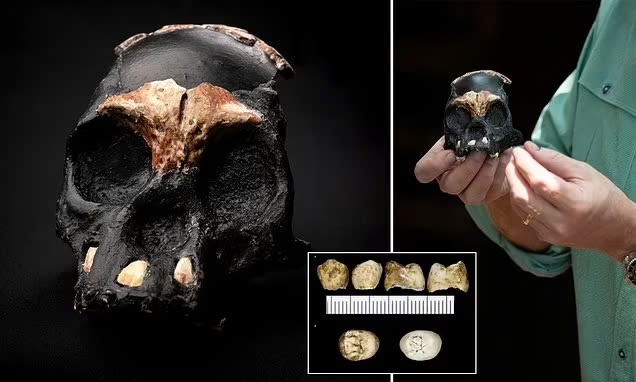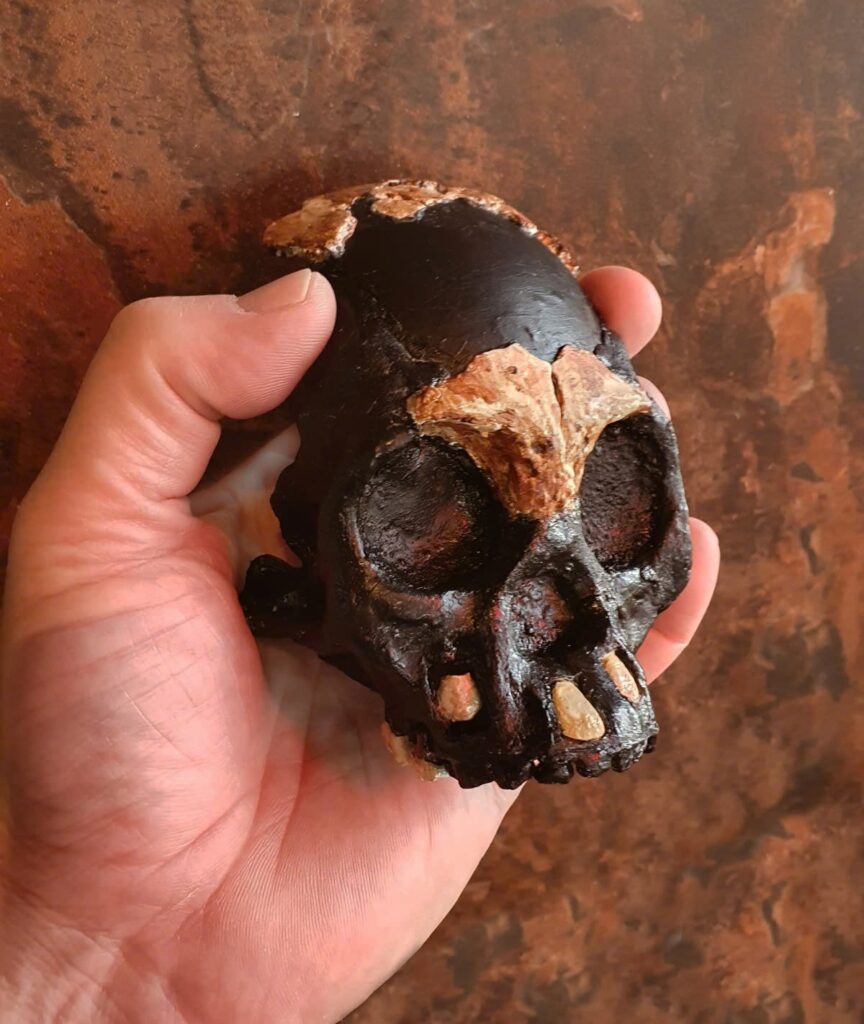Leti’s Story: The Ancient Skull That Redefines Our Understanding of Human Evolution

The unearthing of ancient human ancestors continues to unravel the complex story of our origins. In a groundbreaking discovery, researchers in South Africa have uncovered the tiny skull of a child from the Homo naledi species, shedding light on the development and behaviors of this ancient human relative. The discovery of this skull, named Leti, represents the first evidence of a child from this species and opens new avenues for understanding the intricate tapestry of human evolution.
The Remarkable Discovery of Leti

Deep within the Rising Star cave system in Johannesburg, South Africa, a team of international researchers led by Wits University made a significant find. They discovered the partial skull and teeth of a Homo naledi child, which they have named Leti. Estimated to have lived around 250,000 years ago, Leti was between the ages of four and six at the time of death. While the gender of the child remains undisclosed, the discovery of Leti offers a unique glimpse into the life and development of young members of this ancient species.
Homo Naledi: An Ancient Human Relative

Homo naledi is an archaic human species that roamed parts of Africa during the Middle Pleistocene, approximately 335,000 to 236,000 years ago. This species exhibited a fascinating combination of human and non-human traits, making it a pivotal link in the study of human evolution. Although remains of adult Homo naledi individuals have been previously found within the Rising Star Cave System, Leti represents the first child ever discovered from this species. This find is crucial for understanding how Homo naledi grew and developed.
The Mysterious Placement of Leti’s Remains

The location of Leti’s remains adds an intriguing layer of mystery to the discovery. The tiny skull was found in pieces and later reconstructed by the team. It was discovered in a narrow passage just beyond an area known as the ‘Chaos Chamber,’ within a space measuring only five inches wide and 31 inches long. The deliberate placement of Leti’s body in this remote and dark area of the cave system suggests that it may have been part of an ancient ritual, a practice that raises more questions about the cultural behaviors of Homo naledi.
Reconstructing Leti’s Skull and Insights into Development

The partial skull of Leti, consisting of 28 fragments and six teeth, was carefully pieced together by the research team. Dr. Darryl de Ruiter, a paleoanthropologist and co-author of the study, confirmed that the fragments all belonged to a single individual. Leti’s brain size, estimated to be around 29 to 37 cubic inches, indicates that it had reached approximately 90 to 95 percent of its adult brain capacity. Dr. Debra Bolter, a specialist in growth and development, noted that the size of Leti’s brain is comparable to adult Homo naledi individuals, providing valuable insights into the species’ developmental stages.
Homo Naledi’s Unique Place in Human Evolution

Homo naledi remains one of the most enigmatic ancient human relatives ever discovered. The species exhibited a mix of both primitive and modern traits, with hands, wrists, and feet resembling those of modern humans and Neanderthals, while the small brain and upper body structure were more similar to pre-human australopithecines and early Homo species. Homo naledi’s anatomy suggests it was capable of walking on two legs with a modern gait, as well as climbing and hanging from trees, a trait likely inherited from a more ape-like ancestor.
Conclusion
The discovery of Leti, a 250,000-year-old child from the Homo naledi species, adds a new chapter to the story of human evolution. This find not only provides a rare glimpse into the development of young members of this ancient species but also raises intriguing questions about the cultural practices of Homo naledi. As researchers continue to study these remains, the story of Leti will undoubtedly contribute to our broader understanding of the complexities and mysteries of human ancestry.
Video
News
The Hanging Temple: China’s 1,500-Year-Old Cliffside Marvel of Faith and Engineering
The Hanging Temple: China’s 1,500-Year-Old Cliffside Marvel of Faith and Engineering Perched precariously on the cliffs of Mount Heng in Shanxi Province, China, the Hanging Temple, also known as Xuankong Temple, Hengshan Hanging Temple, or Hanging Monastery, is an architectural…
The Willendorf Venus: A 30,000-Year-Old Masterpiece Reveals Astonishing Secrets
The Willendorf Venus: A 30,000-Year-Old Masterpiece Reveals Astonishing Secrets The “Willendorf Venus” stands as one of the most revered archaeological treasures from the Upper Paleolithic era. Discovered in 1908 by scientist Johann Veran near Willendorf, Austria, this small yet profound…
Unveiling the Maya: Hallucinogens and Rituals Beneath the Yucatán Ball Courts
Unveiling the Maya: Hallucinogens and Rituals Beneath the Yucatán Ball Courts New archaeological research has uncovered intriguing insights into the ritual practices of the ancient Maya civilization. The focus of this study is a ceremonial offering found beneath the sediment…
Uncovering the Oldest Agricultural Machine: The Threshing Sledge’s Neolithic Origins
Uncovering the Oldest Agricultural Machine: The Threshing Sledge’s Neolithic Origins The history of agricultural innovation is a fascinating journey that spans thousands of years, and one of the earliest known agricultural machines is the threshing sledge. Recently, a groundbreaking study…
Nara’s Ancient Sword: A 1,600-Year-Old Protector Against Evil Spirits
Nara’s Ancient Sword: A 1,600-Year-Old Protector Against Evil Spirits In a remarkable discovery that has captured the attention of archaeologists and historians alike, a 7.5-foot-long iron sword was unearthed from a 1,600-year-old burial mound in Nara, Japan. This oversized weapon,…
The Inflatable Plane, Dropped Behind the Lines for Downed Pilots
Experimental The Inflatable Plane, Dropped Behind the Lines for Downed Pilots The Inflatoplane from Goodyear was an unconventional aircraft developed by the Goodyear Aircraft Company, a branch of the renowned Goodyear Tire and Rubber Company, also famed for the Goodyear…
End of content
No more pages to load











